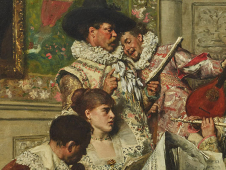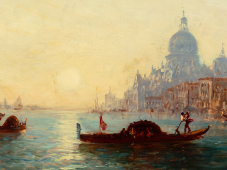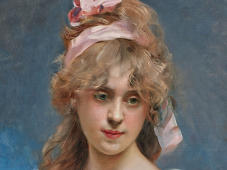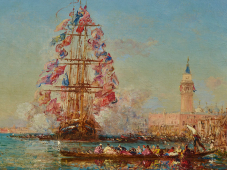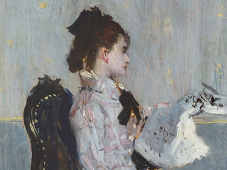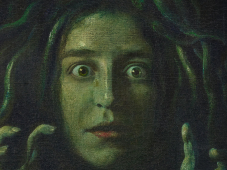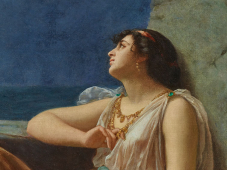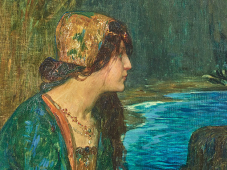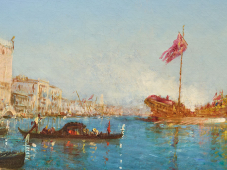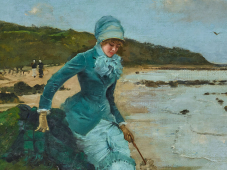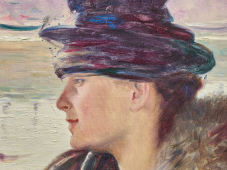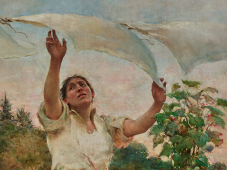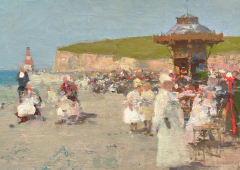Public writer and merchants in front of the Macao temple
Description of the artwork
From 1836 to 1840, Auguste Borget embarked on a world tour that took him to the Americas, the Orient, the Far East and Ocenia. He arrived in China in 1838, where he stayed for a year and a half, including eight months in Macao between October 1838 and the end of May 1839. This was the longest stop of his trip, where he drew landscapes, monuments, villages, homes and scenes of daily life. In pencil or watercolor, he depicts the various trades and crowds that animate the streets of Macao. He was particularly fascinated by the work of the barbers, whom the Chinese frequent every 10 days to have the upper part of their heads shaved and the lower part braided. This hairstyle, known as “queuing”, was the result of a law imposed in the 16th century by the Manchus who had seized power. They forced Chinese men to wear this traditional hairstyle as a sign of submission to the new regime. When Borget was in China, this law was still in force and highly respected, as dissenters risked beheading for disobedience.
There, Borget befriended the British painter George Chinnery, resident in Macao since 1825, who gave him painting lessons, enabling him to master oil painting and color. The painting “The Great Temple of Macao”, now in the Musée de Bourges, was exhibited at the 1841 Salon before being purchased by Louis-Philippe. The A-Ma temple is a fascinating site in Macao, and provided the setting for some of the artist's finest compositions.
The A-Ma temple already existed before the city of Macao was founded. The name “Macau” is said to derive from the Chinese “A-Ma-Gau”, meaning “Bay of A-Ma”, on which the A-Ma temple stands, halfway up the western slope of Barra Hill. It consists of the Gate Pavilion, Memorial Arch, Prayer Hall, Hall of Benevolence, Guanyin Hall and Zhengjiao Chanlin (a Buddhist pavilion), each forming a small part of a well-ordered complex in perfect harmony with the natural environment. The variety of pavilions dedicated to the worship of different deities within a single complex makes the A-Ma temple an exemplary representation of Chinese culture, inspired by Confucianism, Taoism, Buddhism and a host of popular beliefs.
In our painting, Borget accurately depicts a scene taking place beneath the walls leading to the chapel of Macao's Grand Temple. At the foot of the staircase, a small crowd is bustling around a public writer. We discover a barber, young boys playing dice, vegetable and tea vendors. Everyone is busy with their tasks, but the focus is on the writer, whose role is central. In the background, Borget sketches the hill of ancient trees on which the temple is built.
In the collection of lithographs entitled La Chine et les Chinois, dedicated to Louis-Philippe in 1842, we can see the forecourt of the Grand Temple chapel, which Borget quickly sketches in the background of our painting.
Origin
Private collection, France
75008 Paris, France
Saturdays from 2 to 7 p.m.












